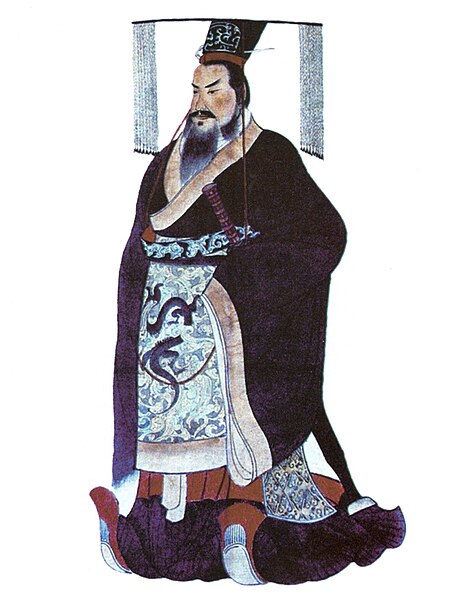The nobility of China represented the upper strata of aristocracy in premodern China, acting as the ruling class until c. 1000 CE, and remaining a significant feature of the traditional social structure until the end of the imperial period.
Qin Shi Huang, founder of the Qin dynasty, created the title of Huangdi, which is translated as "emperor" in English.
Fuxi and Nuwa, mythical early sovereigns of China
Consort Zhen, favoured consort of the Qing Guangxu Emperor (r. 1871–1908)
Consort Zhen (left) with her older sister Consort Jin
Social structure of China
The social structure of China has an expansive history which begins from the feudal society of Imperial China to the contemporary era. There was a Chinese nobility, beginning with the Zhou dynasty. However, after the Song dynasty, the powerful government offices were not hereditary. Instead, they were selected through the imperial examination system, of written examinations based on Confucian thought, thereby undermining the power of the hereditary aristocracy.
Metropolitan Civil Examination Records from the Sixth Year of the Hongzhi Reign (1493)
A Song dynasty gentry and his servant depicted by Ma Yuan circa 1225
Kublai Khan hunts while accompanied by others
Palace gate of Prince Jingjiang in Guilin. The palace-city of Ming princes is the symbol of privilege they enjoyed during the Ming dynasty








